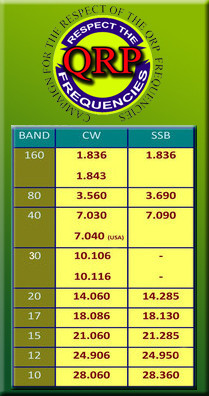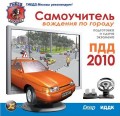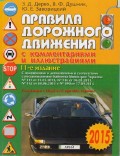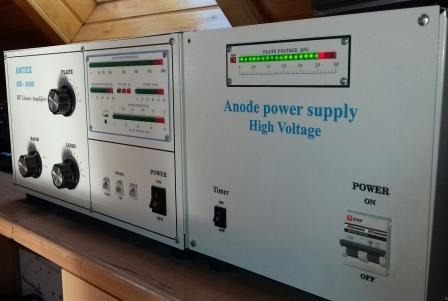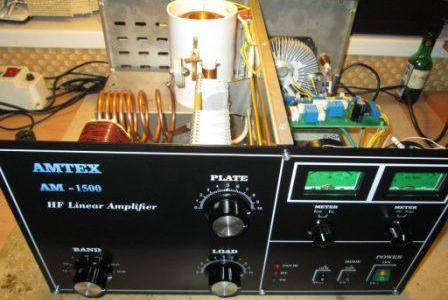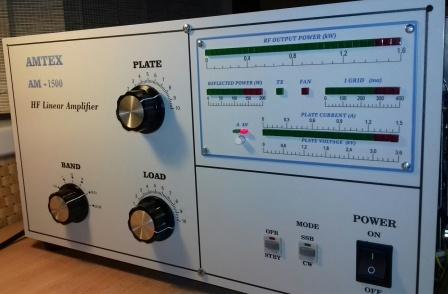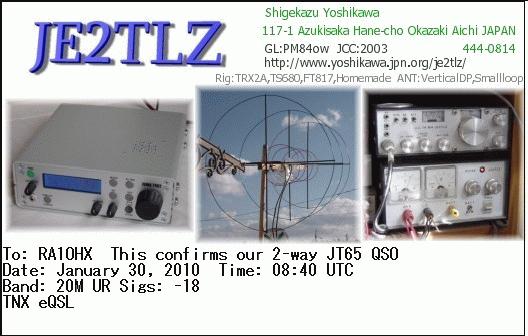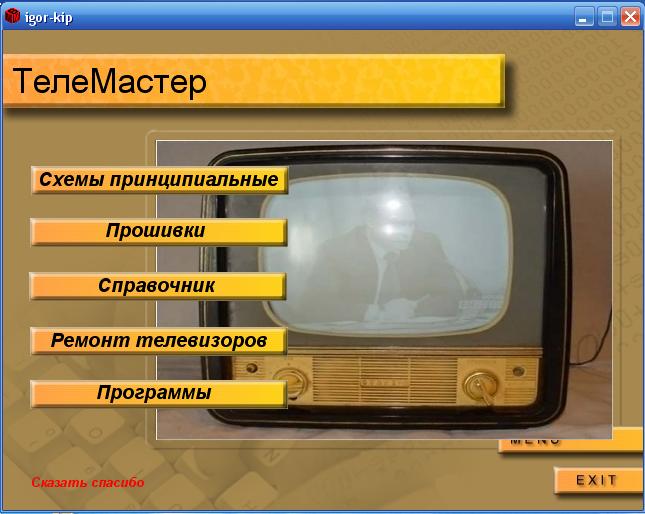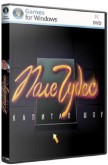-
Contents
-
Table of Contents
-
Troubleshooting
-
Bookmarks
Quick Links
144/440 MHz FM DUAL BANDER
TM-V7A
144/430 MHz FM DUAL BANDER
TM-V7A
144/430 MHz FM DUAL BANDER
TM-V7E
INSTRUCTION MANUAL
KENWOOD CORPORATION
© B62-0678-20 (K,E,M)
09 08 07 06 05 04 03 02
Related Manuals for Kenwood TM-V7A
Summary of Contents for Kenwood TM-V7A
-
Page 1: Instruction Manual
144/440 MHz FM DUAL BANDER TM-V7A 144/430 MHz FM DUAL BANDER TM-V7A 144/430 MHz FM DUAL BANDER TM-V7E INSTRUCTION MANUAL KENWOOD CORPORATION © B62-0678-20 (K,E,M) 09 08 07 06 05 04 03 02…
-
Page 2: Features
THANK YOU! We are grateful you decided to purchase this KENWOOD FM transceiver. This series of mobile transceivers were developed to satisfy the requirement for a compact rig that’s simple to operate yet contains numerous sophisticated features. The dual band operation will be appreciated by hams who want access to VHF and UHF bands with a transceiver smaller than some single banders.
-
Page 3
• Do not transmit with high output power for extended periods. The transceiver may overheat. • Do not modify this transceiver unless instructed by this manual or by KENWOOD documentation. • Do not expose the transceiver to long periods of direct sunlight nor place the transceiver close to heating appliances. -
Page 4: Table Of Contents
SUPPLIED ACCESSORIES … 1 CONVENTIONS FOLLOWED IN THIS MANUAL… 1 PREPERATION FOR MOBILE AND FIXED STATION OPERATION MOBILE INSTALLATION … 2 Installation Example … 2 Installation Steps … 2 DC POWER CABLE CONNECTION … 3 Mobile Operation … 3 Fixed Station Operation … 4 Replacing Fuses …
-
Page 5
Changing Call Channel Contents (Simplex) … 33 Changing Call Channel Contents (Split) … 34 MEMORY VFO TRANSFER … 34 CHANNEL DISPLAY FUNCTION … 34 INITIALIZING MEMORY … 35 Partial Reset (VFO)… 35 Full Reset (Memory) … 35 PROGRAMMABLE MEMORY (PM) PROGRAMMABLE INFORMATION … -
Page 6
PROGRAMMABLE VFO … 64 SWITCHING AM/FM MODE (SOME VERSIONS ONLY) … 64 CHANGING FREQUENCY STEP SIZE … 65 CHANGING MULTI-FUNCTION BUTTON LABELS . 66 CHANGING BEEP VOLUME … 66 LOCK … 67 Transceiver Lock … 67 All Lock … 67 S-METER SQUELCH … -
Page 7: Supplied Accessories
SUPPLIED ACCESSORIES Accessory Microphone U.S.A./ Canada/ T91-0568-XX General (some): MC-53DM Europe/ T91-0396-XX General (some): MC-45 DC power cable E30-2111-XX Transceiver fuse (15 A) F51-0017-XX J29-0632-XX Mounting bracket Mounting bracket screws N99-0331-XX Microphone hanger J19-1526-XX (U.S.A./ Canada only) Microphone hanger screws N46-3010-XX (U.S.A./ Canada only) Warranty card…
-
Page 8: Preperation For Mobile And Fixed Station Operation
PREPARATION FOR MOBILE AND FIXED STATION OPERATION MOBILE INSTALLATION Install the transceiver in a safe, convenient position inside your vehicle that minimizes danger to your passengers and yourself while the vehicle is in motion. For example, consider installing the transceiver under the dash in front of the passenger seat so that knees or legs will not strike the radio during sudden braking of your vehicle.
-
Page 9: Dc Power Cable Connection
DC POWER CABLE CONNECTION Mobile Operation The vehicle battery must have a nominal rating of 12 V. Never connect the transceiver to a 24 V battery. Be sure to use a 12 V vehicle battery that has sufficient current capacity. If the current to the transceiver is insufficient, the display may darken during transmission, or transmit output power may drop excessively.
-
Page 10: Fixed Station Operation
Fixed Station Operation In order to use this transceiver for fixed station operation, you will need a separate 13.8 V DC power supply that must be purchased separately. The recommended current capacity of your power supply is 12 A. 1 Connect the DC power cable to the regulated DC power supply and check that polarities are correct (Red: positive, Black: negative).
-
Page 11: Replacing Fuses
Replacing Fuses If the fuse blows, determine the cause then correct the problem. After the problem is resolved, then replace the fuse. If newly installed fuses continue to blow, disconnect the power cable and contact your dealer or the nearest Service Center for assistance. Fuse Location Fuse Current Rating Transceiver…
-
Page 12: Accessory Connections
One end of the optional PG-5A cable has not been connectorized. Attach the appropriate connector that mates with the TNC connector. RS-232C cable Transceiver TNC power power supply supply PG-5A cable KENWOOD KENWOOD FM DUAL FM DUAL KENWOOD FM DUAL BANDER TM-000 TM-V7…
-
Page 13: Your First Qso
If you tend to discard instruction manuals along with the packaging material …please don’t. The 6 steps given here will get you on the air in your first QSO right away. So, you can enjoy the exhilaration that comes with opening a brand new transceiver. After trying the rig for a while, settle back in your most comfortable operating chair with this manual and your favorite drink for an hour or two.
-
Page 14: Getting Acquainted
BASIC TRANSCEIVER MODES This section introduces you to the basic modes you can select, and differences between the TX band and the Control band. VFO mode Press [VFO] to select. In this mode you can change the operating frequency using the Tuning control or Mic [UP]/[DWN].
-
Page 15: Button Function Display
TX-Band Press the left [BAND SEL] (VHF) or the right [BAND SEL] (UHF) to select. «PTT» on the display shows which band (VHF or UHF) is currently selected as the transmit (TX) band. You can use the TX band to transmit signals or to control the transceiver.
-
Page 16: Front Panel
FRONT PANEL Note: This section describes only the main functions of the front panel controls and buttons. For the functions not described here, you will find explanations in the appropriate sections of this manual. CALL CALL q q q q q CALL button Recalls the Call channel {page 33}.
-
Page 17
CALL CALL y y y y y F (Function) button Allows you to select the different functions that are available using the multifunction buttons. u u u u u TONE button Switches the Tone function {page 24} or CTCSS function {page 49} ON or OFF. -
Page 18: Rear Panel
CALL CALL !3 !3 !3 !3 !3 MNU button Selects the Menu mode {page 19}. !4 !4 !4 !4 !4 PM button Selects the Programmable Memory mode {page 36}. !5 !5 !5 !5 !5 PWR switch Switches the transceiver ON or OFF {page 16}. ! ! ! ! ! 6 Microphone connector Insert the 8-pin modular connector plug until the locking tab «clicks».
-
Page 19: Microphone
MICROPHONE MC-53DM q q q q q UP button w w w w w DWN button Raises or lowers the operating frequency, the memory channel number, the menu number, etc. Holding either button down causes the action to be repeated. Also, switches between values for functions with multiple choices.
-
Page 20: Indicators
INDICATORS On the display you will see various indicators that show what you have selected. Sometimes you may not recall what those indicators mean or how you can cancel the current setting. In such a case, you will find this table very useful.
-
Page 21: Transceiver Guide
TRANSCEIVER GUIDE When you cannot recall how to use a function and you do not have this manual with you, you need not worry. This transceiver shows you the steps for operating the functions that you will often use. Note: Not all functions are supported by Transceiver Guide. 1 Press [MNU] to enter Menu mode.
-
Page 22: Operating Basics
SWITCHING POWER ON/OFF 1 Switch ON the DC power supply. • If operating mobile, skip this step. 2 Press the PWR switch to switch ON the transceiver. CALL CALL 3 To switch OFF the transceiver, press the PWR switch again. •…
-
Page 23: Selecting Frequencies
SELECTING FREQUENCIES Tuning Control Using the Tuning control is convenient when you are within easy reach of the transceiver front panel, and the frequencies to be selected lie near the current frequency. 1 Press [VFO] to select VFO mode. CALL CALL 2 Turn the Tuning control to select a receive frequency.
-
Page 24: Transmitting
TRANSMITTING 1 When ready to begin transmitting, press and hold Mic [PTT] and speak in a normal tone of voice. • «ON AIR» and the RF power meter appear. • Speaking too close to the microphone, or too loudly, may increase distortion and reduce intelligibility of your signal at the receiving station.
-
Page 25: Menu Set-Up
WHAT IS A MENU? Many functions on this transceiver are selected or configured via a software-controlled Menu instead of physical controls on the transceiver. Once familiar with the Menu system, you will appreciate the versatility it offers. MENU ACCESS 1 Select the desired band. •…
-
Page 26: Menu Configuration
Level 1 (max.) ~ level 4 (min.)/ ON/ OFF ON/ OFF 90:90/ 110:70/ 130:50/ 50:130/ 70:110/ 140:140 See reference page ON/ OFF ON/ OFF 00.00 MHz ~ 29.95 MHz in steps of 50 kHz ON/ OFF Default Ref. Page «KENWOOD» F/TONE/REV/LOW Negative 90:90 See reference page…
-
Page 27
Menu No. Item No. Description –– Programmable VFO (Upper/ lower limits) –– DTMF Number Storing –– Scan Resume Methods –– Advanced Intercept Point (AIP) –– Automatic Power Off (APO) –– Time-Out Timer (TOT) DTSS/ Page Code Transmit Delay Auto Page Cancel Page Answer Back (U.S.A./ Canada only) S-meter Squelch… -
Page 28: Operating Through Repeaters
Most repeater configurations fall into one of the following categories: Offset Direction – – (» «) N/A: Not applicable TX: 144.73 MHz TX tone: 88.5 Hz RX: 145.33 MHz TM-V7A/ E TM-V7E TM-V7A +600 kHz +5 MHz +1.6 MHz –1.6 MHz –600 kHz –5 MHz –7.6 MHz…
-
Page 29: Selecting Offset Direction
Select whether the transmit frequency will be higher (+) or lower (–) than the receive frequency. Press [F], [SHIFT] . • Each time you repeat this key operation, the offset direction changes as shown below. Simplex TM-V7A/E (VHF) TM-V7A (UHF) Simplex TM-V7E (UHF)
-
Page 30: Selecting Offset Frequency
Selecting Offset Frequency Select how much the transmit frequency will be offset from the receive frequency. 1 Select the desired band. 2 Press [MNU] to enter Menu mode. 3 Select Menu No. 5 (Repeater). CALL CALL 4 Press [ s s s s s ] , then select Item No.
-
Page 31: Selecting A Tone Frequency
Selecting a Tone Frequency 1 Press [TONE] to activate the Tone function. 2 Press [F] (1 s), [T.SEL] . • The current tone frequency appears. CALL CALL 3 Turn the Tuning control, or Mic [UP]/[DWN] to select a tone frequency. 4 Press [OFF] to complete the setting.
-
Page 32: Automatic Repeater Offset (U.s.a./ Canada/ Europe Only)
Automatic Repeater Offset (U.S.A./ Canada/ Europe Only) This function automatically selects an appropriate offset direction according to the frequency that you select on the VHF band. The transceiver is programmed for offset direction as shown below. To obtain an up-to-date band plan for repeater offset direction, contact your national Amateur Radio association.
-
Page 33: Reverse Function
REVERSE FUNCTION When used while monitoring a repeater, the Reverse function allows you to manually check the signal strength of a station accessing the repeater. If the station’s signal is strong, it is best to move to a simplex frequency to continue the contact and free up the repeater.
-
Page 34: Memory Channels
In memory channels, you can store frequencies and related data that you often use. A total of 280 memory channels are available, 140 each for VHF and UHF. You can also store a name for each memory channel. Using this naming function restricts the total number of memory channels to 180, but allows you to select the ratio of channels between the VHF and UHF bands, from among 5 types.
-
Page 35: Vhf/Uhf Memory Channel Ratio
VHF/UHF MEMORY CHANNEL RATIO You can change the ratio of memory channels between the VHF and UHF bands, from the factory default (90 channels each). Changing the ratio requires all memory channels to be cleared. So decide the appropriate ratio before storing data in memory channels.
-
Page 36: Storing Data In Simplex Channels
STORING DATA IN SIMPLEX CHANNELS 1 Select the desired band. 2 Select the desired frequency and related data (Tone, CTCSS, DTSS, etc.) using VFO mode, Memory Recall {page 31}, or the Call channel {page 33}. 3 Press [F] . • A memory channel number and an arrow appear.
-
Page 37: Recalling Memory Channels
RECALLING MEMORY CHANNELS 1 Select the desired band. 2 Press [MR] to enter Memory Recall mode. • The memory channel used last is recalled. 3 Turn the Tuning control, or press Mic [UP]/[DWN], to select the desired memory channel. • Clockwise or Mic [UP]: Increases the channel number.
-
Page 38: Naming Memory Channels
NAMING MEMORY CHANNELS You can name memory channels using up to 7 alphanumeric characters. When you recall a named memory channel, its name appears on the display with the stored frequency. Names can be callsigns, repeater names, cities, names of people, etc. Note: You cannot use this function after having selected 140:140 memory channel ratio.
-
Page 39: Call Channel
CALL CHANNEL The Call channel can be used to store any frequency and related data that you will recall often. The Call channel can be programmed with a simplex or split frequency as well as related data that can be stored in the memory channels. No matter what mode the transceiver is in, the Call channel can always be selected quickly.
-
Page 40: Changing Call Channel Contents (Split)
Changing Call Channel Contents (Split) 1 Select the desired band. 2 Select the desired receive frequency and related data (Tone, CTCSS, DTSS, etc.) using VFO mode or Memory Recall {page 31}. 3 Press [F] , [CALL] (1 s). • » » appears. •…
-
Page 41: Initializing Memory
INITIALIZING MEMORY If your transceiver seems to be malfunctioning, initializing the transceiver may resolve the problem. Remember that initializing the memory channels requires that you re-enter memory channel data again after the initialization. On the other hand, initialization is a quick way to erase all data from all channels.
-
Page 42: Programmable Memory (Pm)
Programmable Memory (PM) allows you to store virtually all settings currently set on the transceiver. So you can quickly recall exactly the same environment later. This transceiver provides 4 PM channels. If you are the type who likes the many features offered by modern transceivers, but dislikes remembering how to make all the necessary settings, you will find Programmable Memory particularly useful.
-
Page 43: Application Examples
APPLICATION EXAMPLES The following are examples of how you might use Programmable Memory. These examples may not represent applications useful to you, but you will understand the flexibility of this function. Situation 1: You share your transceiver with other members in your family or club.
-
Page 44: Storing Data In Pm Channels
STORING DATA IN PM CHANNELS 1 Confirm that the following conditions have been satisfied: • Both bands are in the receive mode. • Scan is not being used on either band. • Microphone Control is OFF. 2 Select the desired band. 3 Select the desired frequency and related data (Tone, CTCSS, DTSS, etc.) using VFO mode.
-
Page 45: Auto Pm Channel Storing
AUTO PM CHANNEL STORING After you recalled a PM channel, this function automatically overwrites the current PM channel with the present operating environment when: • You recall another PM channel. • You press [PM], [VFO]. • You switch OFF the transceiver. Use the following procedures to activate this function: 1 Press [MNU] to enter Menu mode.
-
Page 46: Scan
Scan is a useful feature for hands-off monitoring of your favorite frequencies. After becoming comfortable with how to use all types of Scan, the monitoring flexibility gained will increase your operating efficiency. This transceiver provides the following conventional scans in addition to “Visual Scan” {page 41} that may be new to you.
-
Page 47: Visual Scan
VISUAL SCAN While you are on the air, Visual Scan allows you to monitor frequencies near the current operating frequency. Visual Scan graphically and simultaneously shows how all frequencies in the selected range are busy. You will see up to 14 segments, for each channel, that represent 7 S-meter levels (2 segments per level).
-
Page 48: Using Visual Scan
Using Visual Scan 1 Select the desired band. 2 Turn the Tuning control, or press Mic [UP]/[DWN], to select the operating frequency. • This frequency will also be used as the center frequency. 3 Press [F] , [VISUAL] to start Visual Scan. •…
-
Page 49: Scan Resume Methods
SCAN RESUME METHODS Before using Scans other than Visual Scan, it’s necessary to decide under what condition you want your transceiver to continue scanning after detecting and stopping for a signal. You can choose Time-Operated mode or Carrier-Operated mode. The default is Time-Operated mode. •…
-
Page 50: Vfo Scan
VFO SCAN VFO Scan allows you to scan all frequencies from the lowest frequency to the highest frequency on the band. The current frequency step size is used. 1 Select the desired band. 2 Press [VFO] (1 s). • The 1 MHz decimal blinks while scanning is in progress. •…
-
Page 51: Locking Out Memory Channels
Locking Out Memory Channels Memory channels that you prefer not to monitor while scanning can be locked out. Lock out any memory channel with the following procedure: 1 Select the desired band. 2 Press [MR] to enter Memory Recall mode. 3 Turn the Tuning control, or press Mic [UP]/[DWN] to select the desired memory channel.
-
Page 52: Program Scan
PROGRAM SCAN Program Scan is similar to VFO Scan except that you select the frequency range of the scan. Setting Scan Limits You can store up to three scan ranges on each band, using memory channels L1/U1, L2/U2, and L3/U3. 1 Select the desired band.
-
Page 53: Using Program Scan
Using Program Scan 1 Select a frequency equal to or between the programmed scan limits. 2 Press [VFO] (1 s). • The 1 MHz decimal blinks while scanning is in progress. • Scan starts at the frequency currently displayed. 3 To reverse the scan direction, turn the Tuning control or press Mic [UP]/[DWN].
-
Page 54: Call/Vfo Scan
CALL/VFO SCAN Use Call/VFO Scan to monitor both the Call channel and the current VFO frequency on the selected band. 1 Select the desired band. 2 Press [VFO] to select VFO mode. 3 Press [CALL] (1 s) to start Call/VFO Scan. •…
-
Page 55: Continuous Tone Coded Squelch System (Ctcss)
CONTINUOUS TONE CODED SQUELCH SYSTEM (CTCSS) CTCSS uses a subaudible tone to control the squelch of transceivers, and by this system you can reject signals from undesired stations. Suppose that only stations «A», «B», and «C» are programmed with the same tone frequency.
-
Page 56: Dual Tone Squelch System (Dtss)
DTSS provides a more refined method than CTCSS to selectively communicate with specific stations. The squelch on the transceiver opens only when the same 3-digit DTMF (Dual Tone Multi-Frequency) code is received that is programmed in this transceiver. You can select a 3-digit code from among 1000 combinations, 000 to 999.
-
Page 57: Using Dtss
USING DTSS 1 Select the desired band. 2 Press [F], [DTSS] to switch the DTSS function ON. • «DT» appears. 3 Select the appropriate DTSS code {page 50}. 4 When you are called: The squelch of your transceiver opens only when the stored DTSS code is received.
-
Page 58: Dtss And Repeaters
DTSS and Repeaters Pressing Mic [PTT] transmits the DTSS signal after a short delay. When using repeaters with long response times, this delay helps the repeater avoid losing a portion of the DTSS code. The delay time is 350 ms during simplex operation.
-
Page 59: Page Code Memory
Page also uses DTMF codes to address specific stations. When your transceiver transmits a DTMF code, the squelch of only the transceivers that have the same code programmed, opens. Unlike DTSS, Page allows you to choose whether you will call a single station or a group of stations. In addition, Page offers the added benefit of identifying who called you.
-
Page 60: Storing Page Codes
STORING PAGE CODES Note: Page does not function while you are storing Page codes even if a code is received that matches one already stored in memory. 1 Select the desired band. 2 Press [F], [DTSS] twice to switch Page ON. •…
-
Page 61: Calling
CALLING Note: Before making a call, store your Station code in channel A, and store the desired Station codes or Group codes in channels 1 to 5. 1 Select the desired band. 2 Tune to the prearranged frequency. 3 Press [F], [DTSS] twice to switch Page ON. •…
-
Page 62: Page And Repeaters
Note: If, after Page has opened the squelch, no signal is received for more than 2 seconds, the squelch will close. «Err» appears on the display if your transceiver fails to receive the Page code correctly. Page may not function in the following situations: •…
-
Page 63: Auto Page Cancel
AUTO PAGE CANCEL After successfully paging another station, switching Page OFF eliminates sending a Page code each time you transmit. Auto Page Cancel automatically handles this situation when a station you called responds using the correct Page code. 1 Press [MNU] to enter Menu mode. 2 Select Menu No.
-
Page 64: Dual Tone Multi-Frequency (Dtmf) Functions
DUAL TONE MULTI-FREQUENCY (DTMF) FUNCTIONS The following DTMF functions require the MC-53DM or MC-45DM (option) microphone. The keypad on the microphone includes the 12 keys found on a push-button telephone plus an additional 4 keys (A, B, C, D). These additional keys are required for various control operations by some repeater systems.
-
Page 65: Storing Dtmf Numbers For Automatic Dialer
STORING DTMF NUMBERS FOR AUTOMATIC DIALER To store a DTMF number with a maximum of 16 digits in any of 10 dedicated DTMF memory channels, follow the procedure below. Note: Audible DTMF tones from other transceivers near you may be picked up by your MC-53DM or MC-45 microphone.
-
Page 66: Confirming Stored Dtmf Numbers
CONFIRMING STORED DTMF NUMBERS 1 Press [MNU] to enter Menu mode. 2 Select Menu No. 7 (DTMF Memory). CALL CALL 3 Press [ s s s s s • The memory channel operated last appears. CALL CALL 4 Press Mic [0] to [9] to select the desired channel. 5 Press [MNU] to exit Menu mode.
-
Page 67: Auxiliary Functions
TIME-OUT TIMER (TOT) It is sometimes necessary or desirable to restrict a single transmission to a specific maximum time. This feature can be useful when accessing repeaters to prevent repeater time-outs, or when trying to conserve battery power. When TOT times out, the transceiver generates beeps and automatically returns to receive mode.
-
Page 68: Automatic Band Change (A.b.c.)
AUTOMATIC BAND CHANGE (A.B.C.) A.B.C. will temporarily switch the RX only band to the TX band immediately after a signal is received on the RX only band. This function allows you to reply to a caller without manually selecting the correct band. Press [F] , [MNU] to toggle the function ON or OFF.
-
Page 69: Dual Band Rx
DUAL BAND RX You can select one of three configurations to simultaneously receive two frequencies. Configuration 1 is the default. Configuration VHF and UHF VHF and VHF UHF and UHF 1 Press the right [BAND SEL] to select VHF/VHF RX or the left [BAND SEL] to select UHF/UHF RX.
-
Page 70: Programmable Vfo
PROGRAMMABLE VFO If you want, you can set limits for the minimum and maximum frequencies that are selectable using the Tuning control or Mic [UP]/[DWN]. 1 Select the desired band. 2 Press [MNU] to enter Menu mode. 3 Select Menu No. 6 (Program VFO). CALL CALL 4 Press [SET] , then select the lower frequency limit.
-
Page 71: Changing Frequency Step Size
CHANGING FREQUENCY STEP SIZE Choosing the correct step size is essential in order to select your exact receive frequency using the Tuning control or Mic [UP]/[DWN]. The default step size on the VHF band is 5 kHz (U.S.A./ Canada) or 12.5 kHz (Europe/ General). The default on the UHF band is 25 kHz no matter which market version.
-
Page 72: Changing Multi-Function Button Labels
CHANGING MULTI-FUNCTION BUTTON LABELS This transceiver shows button labels on the lower portion of the display. You can also change the default configuration to one of the following types. Select the configuration depending on which functions you use most frequently. Basic State Display Labels Labels after Pressing [F] [F] [TONE] [DTSS] [LOW] [OFF] [SHIFT] [REV] [VISUAL]…
-
Page 73: Lock
LOCK Occasionally, you may want to lock the buttons, keys, or controls to prevent yourself or others from accidentally changing the transceiver settings. Transceiver Lock Transceiver Lock is suitable for a typical mobile installation where you alter most functions with your microphone.
-
Page 74: S-Meter Squelch
S-METER SQUELCH By activating S-meter Squelch, the squelch does not open until a signal with the same or greater strength than the S-meter setting is received. This function is useful to eliminate constantly resetting the squelch when receiving weak stations that you have no interest in. You can set a different S-meter value on each band.
-
Page 75: Power-On Message
Each time you switch the transceiver ON, the factory-default message appears and stays for approximately 2 seconds. You can program your favorite message in place of “KENWOOD”. 1 Press [MNU] to enter Menu mode. 2 Select Menu No. 2 (Front Panel).
-
Page 76: Changing Display Conditions
CHANGING DISPLAY CONDITIONS Display Dimmer You can change the display illumination to suit the lighting conditions where you are operating. 1 Press [MNU] to enter Menu mode. 2 Select Menu No. 3 (Display). CALL CALL 3 Press [ s s s s s ] , then select Item No.
-
Page 77: Display Contrast
Display Contrast Select the display contrast that provides the best display visibility. The display visibility changes depending on the front panel mounting angle, display reversal status (positive/ negative), and ambient temperature. 1 Press [MNU] to enter Menu mode. 2 Select Menu No. 3 (Display). CALL CALL 3 Press […
-
Page 78: Configuring Program Function Keys
CONFIGURING PROGRAM FUNCTION KEYS The Programmable Function keys are [PF], [MR], [VFO], and [CALL] located on the face of the microphone. If you prefer, you can change the default functions assigned to these keys. Programmable Function Key [PF] [MR] [VFO] [CALL] To assign a front panel key function: 1 Press one of the following key combinations depending…
-
Page 79
To assign a function unavailable using the front panel keys: 1 Press [MNU] to enter Menu mode. 2 Select Menu No. 16 (Microphone). CALL CALL 3 Press [ s s s s s ] , then select Item No. 2 (PF 1) to No. 5 (PF 4). CALL CALL 4 Press [SET] to select the desired function. -
Page 80: Keypad Direct Entry
KEYPAD DIRECT ENTRY You can select the desired operating frequency, memory channel, or tone frequency by entering numbers directly from the MC-53DM microphone. To use this function, assign the Enter function to any Programmable Function key first {page 72}. Operating Frequency Entry 1 Select the desired band.
-
Page 81: Memory Channel Number Entry
Memory Channel Number Entry 1 Select the desired band. 2 Press [MR] to enter Memory Recall mode. 3 Press the Mic key re-programmed with Enter. • «– –» or «– – –» appears depending on the number of memory channels available on the current band. 4 Use the Mic keypad to enter 2 or 3 digits.
-
Page 82: Changing Speaker Configurations
CHANGING SPEAKER CONFIGURATIONS You can enjoy a variety of speaker configurations by using one or two external speakers. Select either mode 1 or mode 2 depending on which band the internal speaker and/or the external speakers should function. When using one external speaker connected to speaker jack 1: Mode 1: VHF band (external)/ UHF band (external) Mode 2: VHF band (external)/ UHF band (external) When using one external speaker connected to speaker jack 2:…
-
Page 83
You can change numerous transceiver settings with the MC-53DM or MC-45DM microphone without using the transceiver buttons or controls. DTMF tones are used for this remote control operation. First switch Microphone Control ON using Menu Set-up {page 78}. Note: Audible DTMF tones from other transceivers near you may be picked up by your MC-53DM or MC-45DM microphone. -
Page 84: Microphone Control
ACTIVATING MICROPHONE CONTROL 1 Press [MNU] to enter Menu mode. 2 Select Menu No. 16 (Microphone). CALL CALL 3 Press [ s s s s s ] , then select Item No. 1 (Mic Control). CALL CALL 4 Press [SET] to toggle the function ON or OFF (default). 5 Press [MNU] again to exit Menu mode.
-
Page 85: Packet Operation
Connect this transceiver to your personal computer via a Terminal Node Controller (TNC) {page 6}. You can send Email to far away stations or obtain a variety of information via your local bulletin boards, or you may enjoy other Packet applications. Reference material for starting Packet operation should be available at any store that handles Amateur Radio equipment.
-
Page 86: Data Connector Pin Functions
Note: If the TX delay of your TNC is not long enough, connection errors may occur. If connection errors frequently occur, it is recommended to set the TX delay parameter on the TNC to 300 ms by using your computer. Using a modulator input level that is far different from the optimum 40 mV or 2 V…
-
Page 87: Repeater Function (U.s.a/ Canada Only)
REPEATER FUNCTION (U.S.A./ CANADA ONLY) This transceiver is capable of repeating signals originating from either the VHF or UHF band. For example, a signal received on the VHF band is retransmitted on the UHF band. Similarly, a signal received on the UHF band is retransmitted on the VHF band.
-
Page 88: Voice Synthesizer (Optional)
Install the optional VS-3 unit to use this function {page 84}. Each time you change the transceiver mode such as VFO or Memory Recall, the transceiver automatically announces the new mode. The table below shows what the transceiver automatically announces when it enters a new mode. Key Pressed New Mode [VFO]…
-
Page 90: Installing Options
INSTALLING THE VS-3 VOICE SYNTHESIZER UNIT CAUTION: ALWAYS SWITCH OFF THE POWER AND UNPLUG THE DC POWER CABLE FIRST. 1 Remove the five screws from the upper cover of the transceiver. 2 Hold the VS-3 unit with the component side facing inward, and insert the VS-3 connector into the corresponding transceiver connector.
-
Page 91
3 Connect the other end of the connectorized front panel cable to the One Touch panel. • The cut-away corners of the connector should be inserted first into the space such that the corners mate with the positioning tab. Positioning tab Cut-away corner Bracket Screw… -
Page 92: Installation Examples
Installation Examples DFK-3C Power source One Touch panel (3 m) KENWOOD FM DUAL BANDER TM-V7 DFK-4C Power source One Touch panel (4 m) KENWOOD FM DUAL BANDER TM-V7 Main unit DC power cable Main unit Microphone Main unit DC power cable…
-
Page 93: Maintenance
You may return your transceiver for service to the authorized KENWOOD dealer from whom you purchased it or any authorized KENWOOD service center. A copy of the service report will be returned with the transceiver. Please do not send subassemblies or printed circuit boards.
-
Page 94: Troubleshooting
TROUBLESHOOTING The problems described in this table are commonly encountered operational malfunctions. These types of difficulties are usually caused by improper hook-up, accidental incorrect control settings, or operator error due to incomplete programming. These problems are usually not caused by circuit failure. Please review this table, and the appropriate section(s) of this instruction manual, before assuming your transceiver is defective.
-
Page 95
Problem The way the transceiver The electrical contacts on the front functions or displays panel and main unit were soiled. information is strange. The display is too dim, The supply voltage is too low. even though you selected a high dimmer level. The frequency cannot be Memory Recall or the Call channel selected by turning the… -
Page 96
Problem You cannot transmit even 1 The microphone plug was not though you press Mic [PTT]. 2 You selected a transmit offset that Packet operation results in 1 Your frequency differs from the no connects with other stations. 2 The modulation level from the TNC 3 There is multi-path distortion. -
Page 97: Specifications
Specifications are subject to change without notice due to advancements in technology. General Frequency range U.S.A./ Canada Mode Antenna impedance Usable temperature range Power supply Grounding method Current Transmit (max.) Receive (at 2 W output) Frequency stability (–10 C ~ +50 C) Dimensions (W x H x D projections included) Weight SPECIFICATIONS…
-
Page 98
Transmitter Power output Modulation Spurious emissions Maximum frequency deviation Audio distortion (at 60% modulation) Microphone impedance Receiver Circuitry Intermediate frequency (1st/ 2nd) VHF or UHF band Sensitivity Sub VHF or UHF band (12 dB SINAD) (in VHF/VHF or UHF/UHF mode) Selectivity (–6 dB) Selectivity (–60 dB) Squelch sensitivity… -
Page 99: Index
Installation Advanced Intercept Point Antenna … 5 (AIP) … 62 DC Power Cable, Fixed Automatic Band Change Station … 4 (A.B.C.) … 62 DC Power Cable, Mobile … 3 Automatic Power Off DFK 3C/ 4C/ 7C … 84 (APO) … 61 External Speakers …
This manual is also suitable for:
Tm-v7e
Любительская радиосвязь:
- TS-570
Подборка документации по трансиверу Kenwood TS-570, аксессуарам и др.
Kenwood TS-570 документация.
- Инструкция по эксплуатации трансивера TS-570(D)G (открывается в новом окне, формат.pdf, 2.35Mb, Eng).
При поиске описаний новых функций версии «G» (после апгрейда с версии «D» на «G») обращайтесь к следующим страницам:- Новые фунции Меню — стр. 17-19;
- RX эквалайзер — стр. 30;
- Мониторинг TX сигнала (в ТЛФ режимах) — стр. 33;
- Изменение соотношения точка/тире в режиме CW — стр. 35;
- Настройка ВС (глубины затухания) — стр. 38;
- Изменение уровня NR1 — стр. 38.
- Инструкция по эксплуатации трансивера TS-570D на русском.
- Инструкция по эксплуатации трансивера TS-570D на русском (источник СКР, ZIP/MS Word Doc, 65kB).
- Kenwood TS-570 Service manual — Сервисное руководство. (скан., стр. 1-8, 13-14, 19-60, 65-80, 117-120, формат PDF, 3308kB, найдено в интернете).
- Kenwood TS-570 Service manual. Supplement. — Сервисное руководство. Дополнение (спецификация и расположение основных компонентов). (скан., стр. 1-20, 22-34, формат PDF, 2954kB, найдено в интернете).
- TS-570DG Service manual — TS-570DG cервис-мануал (PDF, 22.4 Mb).
Kenwood TS-570 схемы.
- ts570_1.rar (366 KB);
- ts570_2.rar (321 KB);
- ts570_3.rar (371 KB);
- ts570_4.rar (274 KB);
- ts570_5.rar (451 KB);
- ts570_6.rar (318 KB);
Аксессуары, коннекторы и др.
- Communication microphne MC-80. Instruction manual. (PDF, 220 kB)
- Kenwood Connectors (PDF, 284 kB).
- Спецификации опциональных микрофонов Kenwood (GIF, 81 kB).
- Спецификации опциональных фильтров Kenwood (JPEG, 69 kB).
- Литиевая батарейка — любая типа CR2032, пример (PDF, 87 kb) (Kenwood parts No. W09-0873-05 Lithium cell (3V/220mAh)). Кстати, свой трансивер я купил в 1998 году, а батарейку я поменял в 2006-ом году — «родная» батарейка прослужила около 8 лет! Эти 8 лет и были причиной замены, никаких сбоев в работе аппарата не было, батарея выдавала 2.9 вольта и была «made in Japan» (примечание YL3BU).
- Коннектор кабеля питания — Wiring for the Kenwood HF Transceiver Power Cable (JPEG, 55 kB).
- Kenwood amplifier connection (JPEG, 93 kb).
Свободный блок
|
|
поиск в базе ГРЧЦ:
Слушать радио онлайн
|
Kenwood Corporation TK-840 UHF FM трансивер Инструкция по эксплуатации
Модели, описанные в данном руководстве:
TK-840: УВЧ FM-трансивер (25 Вт)
TK-940: FM-трансивер 800 МГц (15 Вт)
TK-941: FM-трансивер 900 МГц (15 Вт)
В этом руководстве определяются и описываются различия между вышеуказанными версиями.
Уведомление для пользователя:
ВАЖНО:
ГОСУДАРСТВЕННЫЙ ЗАКОН ЗАПРЕЩАЕТ РАБОТУ НЕЛИЦЕНЗИРОВАННЫХ РАДИОПЕРЕДАТЧИКОВ НА ТЕРРИТОРИЯХ, ПОДДЕРЖИВАЕМЫХ ПРАВИТЕЛЬСТВОМ. НЕЗАКОННАЯ ОПЕРАЦИЯ НАКАЗЫВАЕТСЯ ШТРАФОМ ИЛИ ТЮРЕМНЫМ ЗАСЕДАНИЕМ ИЛИ И ТО И ТО. ПРЕДОСТАВЛЯЙТЕ ОБСЛУЖИВАНИЕ ТОЛЬКО КВАЛИФИЦИРОВАННОМУ ЛИЦЕНЗИРОВАННОМУ ИЛИ СЕРТИФИЦИРОВАННОМУ ТЕХНИКУ Y.
Может применяться одно или несколько из следующих утверждений:
ПРЕДУПРЕЖДЕНИЕ FCC
Это оборудование генерирует или использует радиочастотную энергию. Изменения или модификации этого оборудования могут вызвать вредные помехи, если только модификации не одобрены в явном виде в руководстве по эксплуатации. Пользователь может потерять право на эксплуатацию данного оборудования в случае внесения несанкционированных изменений или модификаций.
ИНФОРМАЦИЯ ДЛЯ ПОЛЬЗОВАТЕЛЯ ЦИФРОВОГО УСТРОЙСТВА, ТРЕБУЮЩАЯСЯ FCC
Это оборудование было протестировано и признано соответствующим ограничениям для цифровых устройств класса B в соответствии с частью 15 правил FCC. Эти ограничения разработаны для обеспечения разумной защиты от вредных помех при установке в жилых помещениях.
Это оборудование генерирует, использует и может генерировать радиочастотную энергию и, если оно установлено и используется с нарушением инструкций, может создавать вредные помехи для радиосвязи. Однако нет гарантии, что помехи не возникнут при конкретной установке. Если это оборудование действительно создает недопустимые помехи для приема радио или телевидения, что можно определить путем включения и выключения оборудования, пользователю рекомендуется попытаться устранить помехи одним или несколькими из следующих способов:
- Изменить ориентацию или местоположение приемной антенны.
- Увеличьте расстояние между оборудованием и приемником.
- Подключить оборудование к розетке в цепи, отличной от той, к которой подключен приемник.
- Обратитесь к дилеру за технической помощью.
СПАСИБО!
Мы благодарны, что вы выбрали KENWOOD для наземных мобильных приложений. Мы верим, что этот простой в использовании трансивер обеспечит надежную связь и позволит персоналу работать с максимальной эффективностью.
Трансиверы KENWOOD включают в себя новейшие передовые технологии. В результате мы уверены, что вы останетесь довольны качеством и функциями этого продукта.
БЕЗОПАСНОСТЬ
Важно, чтобы оператор знал и понимал опасности, характерные для работы любого трансивера.
ПРЕДУПРЕЖДЕНИЕ!
ВЗРЫВООПАСНЫЕ СРЕДЫ (ГАЗЫ, ПЫЛЬ, ДЫМ и т.д.)
Выключите и не используйте трансивер во время заправки топливом или припаркованного на заправочных станциях. 00 не возите запасные топливные баки в багажнике вашего автомобиля, если ваш трансивер установлен в багажнике.
ТРАВМЫ ОТ РАДИОЧАСТОТНЫХ ПЕРЕДАЧ
00 не используйте ваш трансивер, когда кто-либо касается антенны или когда кто-либо стоит в пределах двух-трех футов от вашей антенны, чтобы избежать возможности радиочастотных ожогов или связанных с ними физических травм.
ДИНАМИТНЫЕ КАПЛЮСЫ
Динамитные капсюли-детонаторы могут взорваться при срабатывании приемопередатчиков, если такое срабатывание происходит в пределах 500 футов от капсюлей-детонаторов. Выключите и не используйте трансивер, когда находитесь в зоне, где ведутся взрывные работы, или где вывешены знаки «ВЫКЛЮЧИТЕ ДВУХСТОРОННЮЮ РАДИОСТАНЦИЮ». Если вы перевозите капсюли-детонаторы в своем автомобиле, убедитесь, что они находятся в закрытом металлическом ящике с мягкой внутренней частью. 00 не передается в течение времени, когда крышки помещаются в этот контейнер или снимаются с него.
РАСПАКОВКА И ПРОВЕРКА ОБОРУДОВАНИЯ
Примечание: Следующие инструкции предназначены для использования вашим дилером KENWOOD, авторизованным сервисным центром KENWOOD или заводом.
Аккуратно распакуйте трансивер. Перед тем, как выбросить упаковочный материал, мы рекомендуем определить элементы, перечисленные в таблице. Если во время транспортировки произошло какое-либо повреждение, file немедленно предъявите претензию перевозчику.
Поставляемые товары
Диаграмма Справка
УСТАНОВКА И ПОДКЛЮЧЕНИЕ
ПРЕДУПРЕЖДЕНИЕ! ПОМЕХИ В ЭЛЕКТРОНИКЕ АВТОМОБИЛЯ
Электронные системы впрыска топлива, электронные противоюзовые тормозные системы и электронные системы круиз-контроля являются типичными типами электронных устройств, которые могут работать со сбоями из-за отсутствия защиты от радиочастотной энергии, присутствующей при передаче. Если транспортное средство оснащено таким оборудованием, проконсультируйтесь с дилером относительно марки транспортного средства и заручитесь его помощью, чтобы определить, будут ли такие электронные схемы нормально работать, когда трансивер работает на передачу.
Примечание: Следующие инструкции предназначены для использования вашим дилером KENWOOD, авторизованным сервисным центром KENWOOD или заводом.
Монтажное оборудование
ВНИМАНИЕ: Будьте осторожны при сверлении монтажных отверстий, чтобы не повредить проводку или детали автомобиля. Перед установкой всегда проверяйте, насколько далеко выступят крепежные винты из-под монтажной поверхности.
Для установки трансивера требуются следующие инструменты: . Электрическая дрель диаметром 6 мм (1/4″) или больше. Сверла и круглые фрезы (размеры указаны ниже)
Планирование установки
Прилагаемая иллюстрация должна помочь вам в планировании установки. Прежде чем начать, определите наилучшее место для трансивера. Трансивер должен быть удобен для пользователя, защищен от повреждения водой, прост в обслуживании и не должен мешать автомеханикам и пассажирам.
Силовой кабель
Кабель питания состоит из красного провода с предохранителями, черного провода с предохранителями и 2-контактной вилки питания. Чтобы установить силовой кабель, проверьте наличие существующего отверстия, удобно расположенного в брандмауэре, через которое можно пропустить кабель. Если отверстия нет, просверлите брандмауэр и установите резиновую втулку.
Начиная с конца кабеля с вилкой на приемопередатчике, проложите два провода питания в моторный отсек из салона. Подсоедините красный провод к положительной (+) клемме аккумулятора или переключаемому источнику питания, а черный провод к отрицательной (-) клемме аккумулятора. Всегда располагайте предохранитель как можно ближе к батарее. Сверните лишний кабель и зафиксируйте его с помощью прилагаемого удерживающего ремня. Убедитесь, что в кабелях достаточно провисания, чтобы трансивер можно было снять для обслуживания при включенном питании.
ВНИМАНИЕ: Трансивер работает только в 12-вольтовых системах с отрицательным заземлением! Всегда проверяйте полярность батареи и уровень громкости.tage транспортного средства перед установкой трансивера.
Установка трансивера
Установите трансивер так, чтобы органы управления находились в пределах легкой досягаемости пользователя. Используйте монтажный кронштейн в качестве шаблона для расположения отверстий, затем просверлите отверстия и установите трансивер. Оставьте достаточно места сзади трансивера для кабельных соединений. Перед тем, как прикрепить трансивер к кронштейну, подсоедините разъем антенны и вилку питания к трансиверу.
ПРЕДУПРЕЖДЕНИЕ! В целях безопасности пассажиров надежно закрепите трансивер, чтобы он не оторвался в случае столкновения. Это особенно важно в универсалах, фургонах и подобных установках, где незакрепленный трансивер может быть чрезвычайно опасен для пассажиров автомобиля.
Микрофон
Закрепите подвеску микрофона так, чтобы микрофон находился в пределах легкой досягаемости пользователя. Ни микрофон, ни микрофонный кабель не должны мешать безопасной эксплуатации автомобиля. После установки держателя микрофона подсоедините штекер микрофона к разъему микрофона на передней панели трансивера, затем поместите микрофон на держатель.
ОРГАНЫ УПРАВЛЕНИЯ И ФУНКЦИИ
Передняя панель
- Выключатель
Нажмите, чтобы включить или выключить питание. - СИСТЕМНЫЕ переключатели вверх/вниз
Нажатие правого переключателя SYSTEM увеличивает номер выбранной системы на единицу. Нажатие левого переключателя SYSTEM уменьшает номер системы на единицу. Удерживание любого переключателя приводит к повторению функции. - ГРУППА Переключатели вверх/вниз
Работает аналогично переключателям SYSTEM, но выбирает группы, доступные в системе. Изменение номера системы приводит к тому, что на дисплее группы отображается номер группы возврата (группа, которая отображалась при последнем выборе системы). - Переключатели громкости вверх/вниз
Нажатие верхнего переключателя VOLUME увеличивает уровень громкости на один шаг. Нажатие нижнего переключателя VOLUME уменьшает уровень громкости на один шаг. Удерживание любого переключателя приводит к повторению функции. - AUX (вспомогательный) переключатель
Нажатие этого переключателя включает программируемые вспомогательные функции, такие как звуковой сигнал, ручное реле и т. д. Для получения более подробной информации обратитесь к своему дилеру. - Переключатель SCAN
Нажатие этого переключателя включает или выключает сканирование системы. - Удалить индикатор
Появляется, когда системы заблокированы из списка сканирования системы. Мигает во время сканирования, если какие-либо системы заблокированы. - Индикатор TX
Появляется, когда трансивер находится в режиме передачи. - индикатор ЗАНЯТО
Появляется при попытке доступа к транковой системе, которая занята без доступных повторителей. - индикатор вызова
Этот индикатор показывает, был ли получен звонок, когда вы отсутствовали в автомобиле. Он запрограммирован на появление при получении определенных групповых идентификаторов (транковые системы) или при поступлении вызова в определенную группу, которая открывает звук (обычные системы). Переключатель микрофона, кнопки PTT, System или Group сбрасывают индикатор CALL. Сброс индикатора вызова другими клавишами определяется программированием дилера. - Индикатор сканирования
Появляется в режиме сканирования системы. - Индикатор ТА
Появляется при выборе системы/группы Talk Around. - ОПТ-индикатор
Отображает состояние дополнительной сигнализации. - Индикатор AUX (вспомогательный)
Появляется, когда функция ручного реле или звукового сигнала активируется (ВКЛ.) нажатием переключателя AUX. - Индикатор трубки
Появляется, когда выбрана группа, запрограммированная с идентификаторами телефонов. - Буквенно-цифровой дисплей
После того, как квалифицированный специалист по обслуживанию дилера запрограммирует приемопередатчик, на буквенно-цифровом дисплее отображаются либо номера систем и номера групп для вашей конкретной сети, либо названия систем и/или групп.
Задняя панель
Микрофон
Переключатель PTT (нажми и говори)
Нажмите PIT, чтобы активировать передающую часть трансивера. Говорите в микрофон, удерживая кнопку PIT. Подробнее см. в разделе «Выполнение диспетчерского вызова» {страница 9}.
МАГИСТРАЛЬНАЯ РАБОТА
Прием диспетчерского вызова
- Включите трансивер.
- Нажмите переключатели VOLUME Up/Down, чтобы установить уровень громкости. Используйте сигналы уровня громкости в качестве руководства.
- Выберите систему и группу с помощью переключателей SYSTEM и переключателей GROUP. Если функция сканирования была запрограммирована, включите или выключите эту функцию по мере необходимости.
- Когда вы услышите голос собеседника, отрегулируйте громкость по мере необходимости.
Выполнение диспетчерского вызова
- Выберите систему и группу, которую вы хотите вызвать, используя переключатели SYSTEM и переключатели GROUP.
- Нажмите переключатель РТТ.
- Если сигнал «занято» или сигнал прерывания не звучит, связь возможна; начать говорить в микрофон. Для достижения наилучших результатов держите микрофон на расстоянии от 1 до 1.5 дюймов ото рта. Отпустите переключатель PTT, когда ваше сообщение будет завершено, и прослушайте ответ. Нажмите переключатель PTT, чтобы говорить; отпустите его, чтобы послушать.
- По окончании разговора верните микрофон на место.
Размещение телефонного звонка
Примечание. Телефонные звонки можно совершать, только если эта услуга доступна и у вас есть дополнительный микрофон с клавиатурой. Обратитесь к своему дилеру за подробностями.
- Выберите нужную систему и группу, которую вы хотите вызвать, используя переключатели SYSTEM и переключатели GROUP.
- Удерживайте переключатель PTT на мгновение (1 секунду), чтобы обеспечить соединение.
- Отпустите тангенту PTT и убедитесь, что вы слышите гудок от ретранслятора.
- Наберите с клавиатуры микрофона. После набора дождитесь ответа от другого абонента.
- Когда другой абонент ответит, нажмите тангенту PTT и начните говорить. Для достижения наилучших результатов держите микрофон на расстоянии от 1 до 1.5 дюймов ото рта. Отпустите переключатель PTT, чтобы прослушать другого абонента. Одновременно может говорить только один человек.
- Чтобы завершить вызов, нажмите клавишу #.
Прием телефонного звонка
- Выберите систему и группу с помощью переключателей SYSTEM и переключателей GROUP. Если функция сканирования была запрограммирована, включите или выключите эту функцию по мере необходимости.
- При поступлении входящего телефонного звонка вы услышите сигнал вызова из динамика.
- Удерживайте кнопку PTT, чтобы говорить, и отпустите ее, чтобы слушать собеседника.
- Чтобы завершить вызов, нажмите клавишу #.
ОБЫЧНАЯ РАБОТА
Получение
- Включите трансивер.
- Нажмите переключатели VOLUME Up/Down, чтобы установить уровень громкости. Используйте сигналы уровня громкости в качестве руководства.
- Выберите систему и группу с помощью переключателей SYSTEM и переключателей GROUP. Если функция сканирования была запрограммирована, включите или выключите эту функцию по мере необходимости.
- Когда вы услышите голос собеседника, отрегулируйте громкость по мере необходимости.
Передающий
Примечание. Перед передачей необходимо проконтролировать канал, чтобы убедиться, что он еще не используется. Если выбранная группа не оснащена OT или DOT, мониторинг осуществляется путем простого прослушивания любого говорящего до того, как вы начнете передачу. Нет необходимости снимать микрофон для прослушивания канала. Если выбранная группа оснащена OT или DOT (по рекомендации вашего дилера), снимите трубку микрофона, чтобы отключить OT или DOT. Тогда, если канал занят, вы услышите разговор.
- Выберите систему и группу, которую вы хотите вызвать, используя переключатели SYSTEM и переключатели GROUP.
- Перед началом передачи проследите за выбранной группой, чтобы проверить, свободна ли она (см. примечание выше). Если группа занята, подождите, пока она освободится.
- Нажмите кнопку PTT и начните говорить. Для достижения наилучших результатов держите микрофон на расстоянии от 1 до 1.5 дюймов ото рта. Отпустите переключатель PTT, когда ваше сообщение будет завершено, и прослушайте ответ. Нажмите переключатель PTT, чтобы говорить; отпустите его, чтобы послушать.
- По окончании разговора верните микрофон на место.
ЗВУКОВЫЕ СИГНАЛЫ ОБРАТНОЙ СВЯЗИ ПОЛЬЗОВАТЕЛЯ
Приемопередатчик выдает различные звуковые сигналы, чтобы уведомить пользователя о рабочем состоянии приемопередатчика.
Тональный сигнал занятости
Сигнал «занято» аналогичен сигналу «занято» телефона. Тон выводится, когда все ретрансляторы в системе используются. Звуковой сигнал прекращается, когда передача становится возможной или когда тангента PTT отпускается.
Тон перехвата
Звук перехвата похож на сигнал сирены «высокий-низкий». Звуковой сигнал звучит, когда трансивер находится вне зоны обслуживания системы, а ретранслятор недоступен. Звук прерывания прекращается, когда тангента PTT отпускается.
Уровень громкости Тон
Звуковой сигнал уровня громкости такой же, как и сигнал «занято». Звуковой сигнал звучит каждый раз, когда нажимается переключатель VOLUME Up/Down, когда трансивер находится в режиме приема. Громкость тона увеличивается и уменьшается по мере регулировки громкости.
Продолжить тон
Этот сигнал представляет собой короткий звуковой сигнал. Он доступен, когда для трансивера установлена функция «Чисто говоря». «Готовность к разговору» просто означает, что система ретранслятора готова начать обработку вашего телефонного звонка после того, как вы успешно соединились с ретранслятором.
СКАНИРОВАНИЕ СИСТЕМЫ
Общие
Если для трансивера запрограммирована функция сканирования, системы можно сканировать с помощью переключателя SCAN. При нажатии переключателя SCAN на дисплее появляется индикатор «S» и «- SCAN _», и начинается сканирование. Сканируются системы, не исключенные из последовательности сканирования. При поступлении вызова сканирование останавливается и появляются системные и групповые цифры. Затем вы отвечаете на вызов, нажимая переключатель PIT. Снятие микрофона с подвески (трубка снята) останавливает сканирование, если только ваш дилер не запрограммировал ваш трансивер на игнорирование условия «трубка снята».
Приемопередатчик продолжает сканирование после регулируемой временной задержки, когда переключатель PIT отпущен, а сигнал не принимается.
Сканирование магистральных систем
При сканировании магистральных систем сканируются группы возврата (см. ниже) в каждой системе, а также группы, не заблокированные из последовательности сканирования. См. ГРУППОВОЕ СКАНИРОВАНИЕ {страница 14}.
Сканирование обычных систем
При сканировании обычных систем сканируются только группы возврата (каналы) в каждой системе.
Блокировка сканирования
Если переключатель AUX (вспомогательный) запрограммирован на функцию блокировки сканирования, пользователь может вручную заблокировать каждую систему из последовательности сканирования.
Отменить сканирование
Откат сканирования относится к возврату сканируемых систем и групп. Вы можете выбрать возврат систем и групп с помощью переключателей SYSTEM и переключателей GROUP. Существует 2 типа возврата сканирования, которые можно запрограммировать у вашего дилера. Один из них называется «Возврат последнего звонка». Последняя полученная система/группа назначается новой системой и группой возврата. Второй тип возврата сканирования называется «Откат последнего использования». Система и группа, которым вы в последний раз ответили, назначаются в качестве новой системы и группы возврата.
ГРУППОВОЕ СКАНИРОВАНИЕ
Функция группового сканирования доступна только для транковых систем. Эта функция полезна, если в системе запрограммировано более одной группы. Функция группового сканирования устанавливается дилером по запросу. Он сканирует не только разрешенные для сканирования группы, но и группы возврата. При получении вызова индикатор группы показывает номер группы, и эта группа становится группой возврата. Просто нажмите переключатель PIT, чтобы ответить на вызов. Как и в случае с системным сканированием, снятие микрофона с подвески (со снятой трубки) останавливает сканирование, если только ваш дилер не запрограммировал трансивер на игнорирование условия со снятой трубкой.
ТАЙМЕР ТАЙМЕРА
Таймер тайм-аута автоматически останавливает непрерывную передачу по истечении заданного времени. Дилер устанавливает время в диапазоне от 15 секунд до 10 минут. Если удерживать нажатым переключатель PIT дольше запрограммированного времени, по истечении времени таймера раздается звуковой сигнал. Звук прекращается после отпускания переключателя PIT.
ЗВУКОВОЙ СИГНАЛ
Если ваш дилер установил звуковой сигнал, эта функция подает звуковой сигнал автомобиля или какой-либо другой тип внешнего оповещения при получении определенных вызовов. Он запрограммирован так же, как и индикатор CALL, чтобы звучать при получении определенных групповых идентификаторов или вызовов.
Если переключатель AUX запрограммирован на управление звуковым сигналом, то эту функцию можно активировать или деактивировать с помощью этого переключателя. Вспомогательный индикатор появляется, когда активирован звуковой сигнал.
ГАРАНТИЯ НА НАЗЕМНЫЕ МОБИЛЬНЫЕ РАДИОУСТАНОВКИ И АКСЕССУАРЫ
Kenwood Communications Corporation («KENWOOD») гарантирует свои наземные мобильные радиостанции и аксессуары следующим образом:
СРОК ДЕЙСТВИЯ ГАРАНТИИ
Настоящая гарантия действует в течение двух (2) лет для радиостанций и одного (1) года для аксессуаров (включая перезаряжаемые батареи). измеряется с даты покупки первым конечным пользователем.
КТО ЗАЩИЩЕН
Настоящая Гарантия распространяется только на первого конечного пользователя.
ЧТО ПОКРЫВАЕТСЯ
За исключением случаев, указанных ниже, настоящая гарантия распространяется на все дефекты материалов и изготовления наземных мобильных радиостанций KENWOOD и аксессуаров. Гарантия не распространяется на следующее.
- Повреждение, износ или выход из строя в результате:
A. Несчастный случай, неправильное использование, злоупотребление, пренебрежение. модификация продукта или невыполнение инструкций, содержащихся в руководстве пользователя.
B. Ремонт или попытка ремонта кем-либо, не уполномоченным KENWOOD.
C. Установка деталей или принадлежностей, не соответствующих качеству или характеристикам оригинальных запчастей или принадлежностей.
D. Установка продукта или удаление продукта из транспортного средства или другого места его использования. - Повреждение или потеря во время транспортировки (претензии необходимо предъявить перевозчику).
- Любое устройство, которое не является новым при продаже первому конечному пользователю или на котором серийный номер был стерт, изменен или удален.
ЗА ЧТО МЫ БУДЕМ ПЛАТИТЬ И ЗА ЧТО ВЫ ДОЛЖНЫ ПЛАТИТЬ
KENWOOD оплатит все затраты на работу и материалы для изделий, на которые распространяется настоящая гарантия. Если необходимо отправить продукт для гарантийного обслуживания, вы несете ответственность за первоначальные расходы по доставке, но мы оплатим расходы по обратной доставке, если продукт будет отремонтирован или заменен по гарантии. Вы несете ответственность за любые расходы, понесенные при демонтаже продукта с автомобиля или другого места использования, а также за повторную установку отремонтированного или замененного продукта.
КАК ПОЛУЧИТЬ ГАРАНТИЙНОЕ ОБСЛУЖИВАНИЕ
Вашу радиостанцию KENWOOD Land Mobile или аксессуар можно обслуживать у любого авторизованного дилера KENWOOD Land Mobile или в сервисном центре. Всякий раз, когда продукт предоставляется для гарантийного обслуживания, вы должны предоставить товарный чек или другое подтверждение даты покупки.
ИСКЛЮЧЕНИЕ ПОДРАЗУМЕВАЕМЫХ ГАРАНТИЙ И УБЫТКОВ
Если это не считается незаконным или не имеющим исковой силы в соответствии с действующим законодательством:
A. ВСЕ ПОДРАЗУМЕВАЕМЫЕ ГАРАНТИИ В ОТНОШЕНИИ МОБИЛЬНЫХ РАДИОСТАНЦИЙ И ПРИНАДЛЕЖНОСТЕЙ KENWOOD LAND, ВКЛЮЧАЯ ПОДРАЗУМЕВАЕМЫЕ ГАРАНТИИ КОММЕРЧЕСКОЙ ПРИГОДНОСТИ И ПРИГОДНОСТИ ДЛЯ
КОНКРЕТНАЯ ЦЕЛЬ НАСТОЯЩИМ ИСКЛЮЧАЕТСЯ.
B. ОТВЕТСТВЕННОСТЬ КОМПАНИИ KENWOOD ПО НАСТОЯЩЕЙ ГАРАНТИИ ОГРАНИЧИВАЕТСЯ РЕМОНТОМ ИЛИ ЗАМЕНОЙ, ПО ВЫБОРКУ КОМПАНИИ KENWOOD, ЛЮБОГО ДЕФЕКТНОГО ПРОДУКТА И НЕ ВКЛЮЧАЕТ УЩЕРБ ЛЮБОГО РОДА, БУДЬТЕ СЛУЧАЙНЫМ, КОСВЕННЫМ ИЛИ ИНЫМ ОБРАЗОМ.
Настоящая Гарантия действует только в Соединенных Штатах Америки.
Если проблема возникает в течение или после Срока действия ограниченной гарантии, или если у вас есть какие-либо вопросы относительно работы продукта. Вам следует обратиться к авторизованному дилеру KENWOOD или в авторизованный сервисный центр. Если проблема или ваш вопрос не решены должным образом, свяжитесь с нашим отделом по работе с клиентами по адресу, указанному ниже:
Для покупателей за пределами США или Канады, которые приобрели этот продукт, обратитесь к местному авторизованному дилеру.
КЕНВУД СЕРВИСНАЯ КОРПОРАЦИЯ
Почтовый ящик 22745 2201 Восточная улица Домингес
Лонг-Бич, Калифорния 90801-5745 Телефон: (310) 761-8275
Узнать больше об этом руководстве и скачать PDF:
Документы / Ресурсы
-
Page 1: Instruction Manual
144/440 MHz FM DUAL BANDER TM-V7A 144/430 MHz FM DUAL BANDER TM-V7A 144/430 MHz FM DUAL BANDER TM-V7E INSTRUCTION MANUAL KENWOOD CORPORATION © B62-0678-20 (K,E,M) 09 08 07 06 05 04 03 02…
-
Page 2: Features
THANK YOU! We are grateful you decided to purchase this KENWOOD FM transceiver. This series of mobile transceivers were developed to satisfy the requirement for a compact rig that’s simple to operate yet contains numerous sophisticated features. The dual band operation will be appreciated by hams who want access to VHF and UHF bands with a transceiver smaller than some single banders.
-
Page 3
• Do not transmit with high output power for extended periods. The transceiver may overheat. • Do not modify this transceiver unless instructed by this manual or by KENWOOD documentation. • Do not expose the transceiver to long periods of direct sunlight nor place the transceiver close to heating appliances. -
Page 4: Table Of Contents
SUPPLIED ACCESSORIES … 1 CONVENTIONS FOLLOWED IN THIS MANUAL… 1 PREPERATION FOR MOBILE AND FIXED STATION OPERATION MOBILE INSTALLATION … 2 Installation Example … 2 Installation Steps … 2 DC POWER CABLE CONNECTION … 3 Mobile Operation … 3 Fixed Station Operation … 4 Replacing Fuses …
-
Page 5
Changing Call Channel Contents (Simplex) … 33 Changing Call Channel Contents (Split) … 34 MEMORY VFO TRANSFER … 34 CHANNEL DISPLAY FUNCTION … 34 INITIALIZING MEMORY … 35 Partial Reset (VFO)… 35 Full Reset (Memory) … 35 PROGRAMMABLE MEMORY (PM) PROGRAMMABLE INFORMATION … -
Page 6
PROGRAMMABLE VFO … 64 SWITCHING AM/FM MODE (SOME VERSIONS ONLY) … 64 CHANGING FREQUENCY STEP SIZE … 65 CHANGING MULTI-FUNCTION BUTTON LABELS . 66 CHANGING BEEP VOLUME … 66 LOCK … 67 Transceiver Lock … 67 All Lock … 67 S-METER SQUELCH … -
Page 7: Supplied Accessories
SUPPLIED ACCESSORIES Accessory Microphone U.S.A./ Canada/ T91-0568-XX General (some): MC-53DM Europe/ T91-0396-XX General (some): MC-45 DC power cable E30-2111-XX Transceiver fuse (15 A) F51-0017-XX J29-0632-XX Mounting bracket Mounting bracket screws N99-0331-XX Microphone hanger J19-1526-XX (U.S.A./ Canada only) Microphone hanger screws N46-3010-XX (U.S.A./ Canada only) Warranty card…
-
Page 8: Preperation For Mobile And Fixed Station Operation
PREPARATION FOR MOBILE AND FIXED STATION OPERATION MOBILE INSTALLATION Install the transceiver in a safe, convenient position inside your vehicle that minimizes danger to your passengers and yourself while the vehicle is in motion. For example, consider installing the transceiver under the dash in front of the passenger seat so that knees or legs will not strike the radio during sudden braking of your vehicle.
-
Page 9: Dc Power Cable Connection
DC POWER CABLE CONNECTION Mobile Operation The vehicle battery must have a nominal rating of 12 V. Never connect the transceiver to a 24 V battery. Be sure to use a 12 V vehicle battery that has sufficient current capacity. If the current to the transceiver is insufficient, the display may darken during transmission, or transmit output power may drop excessively.
-
Page 10: Fixed Station Operation
Fixed Station Operation In order to use this transceiver for fixed station operation, you will need a separate 13.8 V DC power supply that must be purchased separately. The recommended current capacity of your power supply is 12 A. 1 Connect the DC power cable to the regulated DC power supply and check that polarities are correct (Red: positive, Black: negative).
-
Page 11: Replacing Fuses
Replacing Fuses If the fuse blows, determine the cause then correct the problem. After the problem is resolved, then replace the fuse. If newly installed fuses continue to blow, disconnect the power cable and contact your dealer or the nearest Service Center for assistance. Fuse Location Fuse Current Rating Transceiver…
-
Page 12: Accessory Connections
One end of the optional PG-5A cable has not been connectorized. Attach the appropriate connector that mates with the TNC connector. RS-232C cable Transceiver TNC power power supply supply PG-5A cable KENWOOD KENWOOD FM DUAL FM DUAL KENWOOD FM DUAL BANDER TM-000 TM-V7…
-
Page 13: Your First Qso
If you tend to discard instruction manuals along with the packaging material …please don’t. The 6 steps given here will get you on the air in your first QSO right away. So, you can enjoy the exhilaration that comes with opening a brand new transceiver. After trying the rig for a while, settle back in your most comfortable operating chair with this manual and your favorite drink for an hour or two.
-
Page 14: Getting Acquainted
BASIC TRANSCEIVER MODES This section introduces you to the basic modes you can select, and differences between the TX band and the Control band. VFO mode Press [VFO] to select. In this mode you can change the operating frequency using the Tuning control or Mic [UP]/[DWN].
-
Page 15: Button Function Display
TX-Band Press the left [BAND SEL] (VHF) or the right [BAND SEL] (UHF) to select. «PTT» on the display shows which band (VHF or UHF) is currently selected as the transmit (TX) band. You can use the TX band to transmit signals or to control the transceiver.
-
Page 16: Front Panel
FRONT PANEL Note: This section describes only the main functions of the front panel controls and buttons. For the functions not described here, you will find explanations in the appropriate sections of this manual. CALL CALL q q q q q CALL button Recalls the Call channel {page 33}.
-
Page 17
CALL CALL y y y y y F (Function) button Allows you to select the different functions that are available using the multifunction buttons. u u u u u TONE button Switches the Tone function {page 24} or CTCSS function {page 49} ON or OFF. -
Page 18: Rear Panel
CALL CALL !3 !3 !3 !3 !3 MNU button Selects the Menu mode {page 19}. !4 !4 !4 !4 !4 PM button Selects the Programmable Memory mode {page 36}. !5 !5 !5 !5 !5 PWR switch Switches the transceiver ON or OFF {page 16}. ! ! ! ! ! 6 Microphone connector Insert the 8-pin modular connector plug until the locking tab «clicks».
-
Page 19: Microphone
MICROPHONE MC-53DM q q q q q UP button w w w w w DWN button Raises or lowers the operating frequency, the memory channel number, the menu number, etc. Holding either button down causes the action to be repeated. Also, switches between values for functions with multiple choices.
-
Page 20: Indicators
INDICATORS On the display you will see various indicators that show what you have selected. Sometimes you may not recall what those indicators mean or how you can cancel the current setting. In such a case, you will find this table very useful.
-
Page 21: Transceiver Guide
TRANSCEIVER GUIDE When you cannot recall how to use a function and you do not have this manual with you, you need not worry. This transceiver shows you the steps for operating the functions that you will often use. Note: Not all functions are supported by Transceiver Guide. 1 Press [MNU] to enter Menu mode.
-
Page 22: Operating Basics
SWITCHING POWER ON/OFF 1 Switch ON the DC power supply. • If operating mobile, skip this step. 2 Press the PWR switch to switch ON the transceiver. CALL CALL 3 To switch OFF the transceiver, press the PWR switch again. •…
-
Page 23: Selecting Frequencies
SELECTING FREQUENCIES Tuning Control Using the Tuning control is convenient when you are within easy reach of the transceiver front panel, and the frequencies to be selected lie near the current frequency. 1 Press [VFO] to select VFO mode. CALL CALL 2 Turn the Tuning control to select a receive frequency.
-
Page 24: Transmitting
TRANSMITTING 1 When ready to begin transmitting, press and hold Mic [PTT] and speak in a normal tone of voice. • «ON AIR» and the RF power meter appear. • Speaking too close to the microphone, or too loudly, may increase distortion and reduce intelligibility of your signal at the receiving station.
-
Page 25: Menu Set-Up
WHAT IS A MENU? Many functions on this transceiver are selected or configured via a software-controlled Menu instead of physical controls on the transceiver. Once familiar with the Menu system, you will appreciate the versatility it offers. MENU ACCESS 1 Select the desired band. •…
-
Page 26: Menu Configuration
Level 1 (max.) ~ level 4 (min.)/ ON/ OFF ON/ OFF 90:90/ 110:70/ 130:50/ 50:130/ 70:110/ 140:140 See reference page ON/ OFF ON/ OFF 00.00 MHz ~ 29.95 MHz in steps of 50 kHz ON/ OFF Default Ref. Page «KENWOOD» F/TONE/REV/LOW Negative 90:90 See reference page…
-
Page 27
Menu No. Item No. Description –– Programmable VFO (Upper/ lower limits) –– DTMF Number Storing –– Scan Resume Methods –– Advanced Intercept Point (AIP) –– Automatic Power Off (APO) –– Time-Out Timer (TOT) DTSS/ Page Code Transmit Delay Auto Page Cancel Page Answer Back (U.S.A./ Canada only) S-meter Squelch… -
Page 28: Operating Through Repeaters
Most repeater configurations fall into one of the following categories: Offset Direction – – (» «) N/A: Not applicable TX: 144.73 MHz TX tone: 88.5 Hz RX: 145.33 MHz TM-V7A/ E TM-V7E TM-V7A +600 kHz +5 MHz +1.6 MHz –1.6 MHz –600 kHz –5 MHz –7.6 MHz…
-
Page 29: Selecting Offset Direction
Select whether the transmit frequency will be higher (+) or lower (–) than the receive frequency. Press [F], [SHIFT] . • Each time you repeat this key operation, the offset direction changes as shown below. Simplex TM-V7A/E (VHF) TM-V7A (UHF) Simplex TM-V7E (UHF)
-
Page 30: Selecting Offset Frequency
Selecting Offset Frequency Select how much the transmit frequency will be offset from the receive frequency. 1 Select the desired band. 2 Press [MNU] to enter Menu mode. 3 Select Menu No. 5 (Repeater). CALL CALL 4 Press [ s s s s s ] , then select Item No.
-
Page 31: Selecting A Tone Frequency
Selecting a Tone Frequency 1 Press [TONE] to activate the Tone function. 2 Press [F] (1 s), [T.SEL] . • The current tone frequency appears. CALL CALL 3 Turn the Tuning control, or Mic [UP]/[DWN] to select a tone frequency. 4 Press [OFF] to complete the setting.
-
Page 32: Automatic Repeater Offset (U.s.a./ Canada/ Europe Only)
Automatic Repeater Offset (U.S.A./ Canada/ Europe Only) This function automatically selects an appropriate offset direction according to the frequency that you select on the VHF band. The transceiver is programmed for offset direction as shown below. To obtain an up-to-date band plan for repeater offset direction, contact your national Amateur Radio association.
-
Page 33: Reverse Function
REVERSE FUNCTION When used while monitoring a repeater, the Reverse function allows you to manually check the signal strength of a station accessing the repeater. If the station’s signal is strong, it is best to move to a simplex frequency to continue the contact and free up the repeater.
-
Page 34: Memory Channels
In memory channels, you can store frequencies and related data that you often use. A total of 280 memory channels are available, 140 each for VHF and UHF. You can also store a name for each memory channel. Using this naming function restricts the total number of memory channels to 180, but allows you to select the ratio of channels between the VHF and UHF bands, from among 5 types.
-
Page 35: Vhf/Uhf Memory Channel Ratio
VHF/UHF MEMORY CHANNEL RATIO You can change the ratio of memory channels between the VHF and UHF bands, from the factory default (90 channels each). Changing the ratio requires all memory channels to be cleared. So decide the appropriate ratio before storing data in memory channels.
-
Page 36: Storing Data In Simplex Channels
STORING DATA IN SIMPLEX CHANNELS 1 Select the desired band. 2 Select the desired frequency and related data (Tone, CTCSS, DTSS, etc.) using VFO mode, Memory Recall {page 31}, or the Call channel {page 33}. 3 Press [F] . • A memory channel number and an arrow appear.
-
Page 37: Recalling Memory Channels
RECALLING MEMORY CHANNELS 1 Select the desired band. 2 Press [MR] to enter Memory Recall mode. • The memory channel used last is recalled. 3 Turn the Tuning control, or press Mic [UP]/[DWN], to select the desired memory channel. • Clockwise or Mic [UP]: Increases the channel number.
-
Page 38: Naming Memory Channels
NAMING MEMORY CHANNELS You can name memory channels using up to 7 alphanumeric characters. When you recall a named memory channel, its name appears on the display with the stored frequency. Names can be callsigns, repeater names, cities, names of people, etc. Note: You cannot use this function after having selected 140:140 memory channel ratio.
-
Page 39: Call Channel
CALL CHANNEL The Call channel can be used to store any frequency and related data that you will recall often. The Call channel can be programmed with a simplex or split frequency as well as related data that can be stored in the memory channels. No matter what mode the transceiver is in, the Call channel can always be selected quickly.
-
Page 40: Changing Call Channel Contents (Split)
Changing Call Channel Contents (Split) 1 Select the desired band. 2 Select the desired receive frequency and related data (Tone, CTCSS, DTSS, etc.) using VFO mode or Memory Recall {page 31}. 3 Press [F] , [CALL] (1 s). • » » appears. •…
-
Page 41: Initializing Memory
INITIALIZING MEMORY If your transceiver seems to be malfunctioning, initializing the transceiver may resolve the problem. Remember that initializing the memory channels requires that you re-enter memory channel data again after the initialization. On the other hand, initialization is a quick way to erase all data from all channels.
-
Page 42: Programmable Memory (Pm)
Programmable Memory (PM) allows you to store virtually all settings currently set on the transceiver. So you can quickly recall exactly the same environment later. This transceiver provides 4 PM channels. If you are the type who likes the many features offered by modern transceivers, but dislikes remembering how to make all the necessary settings, you will find Programmable Memory particularly useful.
-
Page 43: Application Examples
APPLICATION EXAMPLES The following are examples of how you might use Programmable Memory. These examples may not represent applications useful to you, but you will understand the flexibility of this function. Situation 1: You share your transceiver with other members in your family or club.
-
Page 44: Storing Data In Pm Channels
STORING DATA IN PM CHANNELS 1 Confirm that the following conditions have been satisfied: • Both bands are in the receive mode. • Scan is not being used on either band. • Microphone Control is OFF. 2 Select the desired band. 3 Select the desired frequency and related data (Tone, CTCSS, DTSS, etc.) using VFO mode.
-
Page 45: Auto Pm Channel Storing
AUTO PM CHANNEL STORING After you recalled a PM channel, this function automatically overwrites the current PM channel with the present operating environment when: • You recall another PM channel. • You press [PM], [VFO]. • You switch OFF the transceiver. Use the following procedures to activate this function: 1 Press [MNU] to enter Menu mode.
-
Page 46: Scan
Scan is a useful feature for hands-off monitoring of your favorite frequencies. After becoming comfortable with how to use all types of Scan, the monitoring flexibility gained will increase your operating efficiency. This transceiver provides the following conventional scans in addition to “Visual Scan” {page 41} that may be new to you.
-
Page 47: Visual Scan
VISUAL SCAN While you are on the air, Visual Scan allows you to monitor frequencies near the current operating frequency. Visual Scan graphically and simultaneously shows how all frequencies in the selected range are busy. You will see up to 14 segments, for each channel, that represent 7 S-meter levels (2 segments per level).
-
Page 48: Using Visual Scan
Using Visual Scan 1 Select the desired band. 2 Turn the Tuning control, or press Mic [UP]/[DWN], to select the operating frequency. • This frequency will also be used as the center frequency. 3 Press [F] , [VISUAL] to start Visual Scan. •…
-
Page 49: Scan Resume Methods
SCAN RESUME METHODS Before using Scans other than Visual Scan, it’s necessary to decide under what condition you want your transceiver to continue scanning after detecting and stopping for a signal. You can choose Time-Operated mode or Carrier-Operated mode. The default is Time-Operated mode. •…
-
Page 50: Vfo Scan
VFO SCAN VFO Scan allows you to scan all frequencies from the lowest frequency to the highest frequency on the band. The current frequency step size is used. 1 Select the desired band. 2 Press [VFO] (1 s). • The 1 MHz decimal blinks while scanning is in progress. •…
-
Page 51: Locking Out Memory Channels
Locking Out Memory Channels Memory channels that you prefer not to monitor while scanning can be locked out. Lock out any memory channel with the following procedure: 1 Select the desired band. 2 Press [MR] to enter Memory Recall mode. 3 Turn the Tuning control, or press Mic [UP]/[DWN] to select the desired memory channel.
-
Page 52: Program Scan
PROGRAM SCAN Program Scan is similar to VFO Scan except that you select the frequency range of the scan. Setting Scan Limits You can store up to three scan ranges on each band, using memory channels L1/U1, L2/U2, and L3/U3. 1 Select the desired band.
-
Page 53: Using Program Scan
Using Program Scan 1 Select a frequency equal to or between the programmed scan limits. 2 Press [VFO] (1 s). • The 1 MHz decimal blinks while scanning is in progress. • Scan starts at the frequency currently displayed. 3 To reverse the scan direction, turn the Tuning control or press Mic [UP]/[DWN].
-
Page 54: Call/Vfo Scan
CALL/VFO SCAN Use Call/VFO Scan to monitor both the Call channel and the current VFO frequency on the selected band. 1 Select the desired band. 2 Press [VFO] to select VFO mode. 3 Press [CALL] (1 s) to start Call/VFO Scan. •…
-
Page 55: Continuous Tone Coded Squelch System (Ctcss)
CONTINUOUS TONE CODED SQUELCH SYSTEM (CTCSS) CTCSS uses a subaudible tone to control the squelch of transceivers, and by this system you can reject signals from undesired stations. Suppose that only stations «A», «B», and «C» are programmed with the same tone frequency.
-
Page 56: Dual Tone Squelch System (Dtss)
DTSS provides a more refined method than CTCSS to selectively communicate with specific stations. The squelch on the transceiver opens only when the same 3-digit DTMF (Dual Tone Multi-Frequency) code is received that is programmed in this transceiver. You can select a 3-digit code from among 1000 combinations, 000 to 999.
-
Page 57: Using Dtss
USING DTSS 1 Select the desired band. 2 Press [F], [DTSS] to switch the DTSS function ON. • «DT» appears. 3 Select the appropriate DTSS code {page 50}. 4 When you are called: The squelch of your transceiver opens only when the stored DTSS code is received.
-
Page 58: Dtss And Repeaters
DTSS and Repeaters Pressing Mic [PTT] transmits the DTSS signal after a short delay. When using repeaters with long response times, this delay helps the repeater avoid losing a portion of the DTSS code. The delay time is 350 ms during simplex operation.
-
Page 59: Page Code Memory
Page also uses DTMF codes to address specific stations. When your transceiver transmits a DTMF code, the squelch of only the transceivers that have the same code programmed, opens. Unlike DTSS, Page allows you to choose whether you will call a single station or a group of stations. In addition, Page offers the added benefit of identifying who called you.
-
Page 60: Storing Page Codes
STORING PAGE CODES Note: Page does not function while you are storing Page codes even if a code is received that matches one already stored in memory. 1 Select the desired band. 2 Press [F], [DTSS] twice to switch Page ON. •…
-
Page 61: Calling
CALLING Note: Before making a call, store your Station code in channel A, and store the desired Station codes or Group codes in channels 1 to 5. 1 Select the desired band. 2 Tune to the prearranged frequency. 3 Press [F], [DTSS] twice to switch Page ON. •…
-
Page 62: Page And Repeaters
Note: If, after Page has opened the squelch, no signal is received for more than 2 seconds, the squelch will close. «Err» appears on the display if your transceiver fails to receive the Page code correctly. Page may not function in the following situations: •…
-
Page 63: Auto Page Cancel
AUTO PAGE CANCEL After successfully paging another station, switching Page OFF eliminates sending a Page code each time you transmit. Auto Page Cancel automatically handles this situation when a station you called responds using the correct Page code. 1 Press [MNU] to enter Menu mode. 2 Select Menu No.
-
Page 64: Dual Tone Multi-Frequency (Dtmf) Functions
DUAL TONE MULTI-FREQUENCY (DTMF) FUNCTIONS The following DTMF functions require the MC-53DM or MC-45DM (option) microphone. The keypad on the microphone includes the 12 keys found on a push-button telephone plus an additional 4 keys (A, B, C, D). These additional keys are required for various control operations by some repeater systems.
-
Page 65: Storing Dtmf Numbers For Automatic Dialer
STORING DTMF NUMBERS FOR AUTOMATIC DIALER To store a DTMF number with a maximum of 16 digits in any of 10 dedicated DTMF memory channels, follow the procedure below. Note: Audible DTMF tones from other transceivers near you may be picked up by your MC-53DM or MC-45 microphone.
-
Page 66: Confirming Stored Dtmf Numbers
CONFIRMING STORED DTMF NUMBERS 1 Press [MNU] to enter Menu mode. 2 Select Menu No. 7 (DTMF Memory). CALL CALL 3 Press [ s s s s s • The memory channel operated last appears. CALL CALL 4 Press Mic [0] to [9] to select the desired channel. 5 Press [MNU] to exit Menu mode.
-
Page 67: Auxiliary Functions
TIME-OUT TIMER (TOT) It is sometimes necessary or desirable to restrict a single transmission to a specific maximum time. This feature can be useful when accessing repeaters to prevent repeater time-outs, or when trying to conserve battery power. When TOT times out, the transceiver generates beeps and automatically returns to receive mode.
-
Page 68: Automatic Band Change (A.b.c.)
AUTOMATIC BAND CHANGE (A.B.C.) A.B.C. will temporarily switch the RX only band to the TX band immediately after a signal is received on the RX only band. This function allows you to reply to a caller without manually selecting the correct band. Press [F] , [MNU] to toggle the function ON or OFF.
-
Page 69: Dual Band Rx
DUAL BAND RX You can select one of three configurations to simultaneously receive two frequencies. Configuration 1 is the default. Configuration VHF and UHF VHF and VHF UHF and UHF 1 Press the right [BAND SEL] to select VHF/VHF RX or the left [BAND SEL] to select UHF/UHF RX.
-
Page 70: Programmable Vfo
PROGRAMMABLE VFO If you want, you can set limits for the minimum and maximum frequencies that are selectable using the Tuning control or Mic [UP]/[DWN]. 1 Select the desired band. 2 Press [MNU] to enter Menu mode. 3 Select Menu No. 6 (Program VFO). CALL CALL 4 Press [SET] , then select the lower frequency limit.
-
Page 71: Changing Frequency Step Size
CHANGING FREQUENCY STEP SIZE Choosing the correct step size is essential in order to select your exact receive frequency using the Tuning control or Mic [UP]/[DWN]. The default step size on the VHF band is 5 kHz (U.S.A./ Canada) or 12.5 kHz (Europe/ General). The default on the UHF band is 25 kHz no matter which market version.
-
Page 72: Changing Multi-Function Button Labels
CHANGING MULTI-FUNCTION BUTTON LABELS This transceiver shows button labels on the lower portion of the display. You can also change the default configuration to one of the following types. Select the configuration depending on which functions you use most frequently. Basic State Display Labels Labels after Pressing [F] [F] [TONE] [DTSS] [LOW] [OFF] [SHIFT] [REV] [VISUAL]…
-
Page 73: Lock
LOCK Occasionally, you may want to lock the buttons, keys, or controls to prevent yourself or others from accidentally changing the transceiver settings. Transceiver Lock Transceiver Lock is suitable for a typical mobile installation where you alter most functions with your microphone.
-
Page 74: S-Meter Squelch
S-METER SQUELCH By activating S-meter Squelch, the squelch does not open until a signal with the same or greater strength than the S-meter setting is received. This function is useful to eliminate constantly resetting the squelch when receiving weak stations that you have no interest in. You can set a different S-meter value on each band.
-
Page 75: Power-On Message
Each time you switch the transceiver ON, the factory-default message appears and stays for approximately 2 seconds. You can program your favorite message in place of “KENWOOD”. 1 Press [MNU] to enter Menu mode. 2 Select Menu No. 2 (Front Panel).
-
Page 76: Changing Display Conditions
CHANGING DISPLAY CONDITIONS Display Dimmer You can change the display illumination to suit the lighting conditions where you are operating. 1 Press [MNU] to enter Menu mode. 2 Select Menu No. 3 (Display). CALL CALL 3 Press [ s s s s s ] , then select Item No.
-
Page 77: Display Contrast
Display Contrast Select the display contrast that provides the best display visibility. The display visibility changes depending on the front panel mounting angle, display reversal status (positive/ negative), and ambient temperature. 1 Press [MNU] to enter Menu mode. 2 Select Menu No. 3 (Display). CALL CALL 3 Press […
-
Page 78: Configuring Program Function Keys
CONFIGURING PROGRAM FUNCTION KEYS The Programmable Function keys are [PF], [MR], [VFO], and [CALL] located on the face of the microphone. If you prefer, you can change the default functions assigned to these keys. Programmable Function Key [PF] [MR] [VFO] [CALL] To assign a front panel key function: 1 Press one of the following key combinations depending…
-
Page 79
To assign a function unavailable using the front panel keys: 1 Press [MNU] to enter Menu mode. 2 Select Menu No. 16 (Microphone). CALL CALL 3 Press [ s s s s s ] , then select Item No. 2 (PF 1) to No. 5 (PF 4). CALL CALL 4 Press [SET] to select the desired function. -
Page 80: Keypad Direct Entry
KEYPAD DIRECT ENTRY You can select the desired operating frequency, memory channel, or tone frequency by entering numbers directly from the MC-53DM microphone. To use this function, assign the Enter function to any Programmable Function key first {page 72}. Operating Frequency Entry 1 Select the desired band.
-
Page 81: Memory Channel Number Entry
Memory Channel Number Entry 1 Select the desired band. 2 Press [MR] to enter Memory Recall mode. 3 Press the Mic key re-programmed with Enter. • «– –» or «– – –» appears depending on the number of memory channels available on the current band. 4 Use the Mic keypad to enter 2 or 3 digits.
-
Page 82: Changing Speaker Configurations
CHANGING SPEAKER CONFIGURATIONS You can enjoy a variety of speaker configurations by using one or two external speakers. Select either mode 1 or mode 2 depending on which band the internal speaker and/or the external speakers should function. When using one external speaker connected to speaker jack 1: Mode 1: VHF band (external)/ UHF band (external) Mode 2: VHF band (external)/ UHF band (external) When using one external speaker connected to speaker jack 2:…
-
Page 83
You can change numerous transceiver settings with the MC-53DM or MC-45DM microphone without using the transceiver buttons or controls. DTMF tones are used for this remote control operation. First switch Microphone Control ON using Menu Set-up {page 78}. Note: Audible DTMF tones from other transceivers near you may be picked up by your MC-53DM or MC-45DM microphone. -
Page 84: Microphone Control
ACTIVATING MICROPHONE CONTROL 1 Press [MNU] to enter Menu mode. 2 Select Menu No. 16 (Microphone). CALL CALL 3 Press [ s s s s s ] , then select Item No. 1 (Mic Control). CALL CALL 4 Press [SET] to toggle the function ON or OFF (default). 5 Press [MNU] again to exit Menu mode.
-
Page 85: Packet Operation
Connect this transceiver to your personal computer via a Terminal Node Controller (TNC) {page 6}. You can send Email to far away stations or obtain a variety of information via your local bulletin boards, or you may enjoy other Packet applications. Reference material for starting Packet operation should be available at any store that handles Amateur Radio equipment.
-
Page 86: Data Connector Pin Functions
Note: If the TX delay of your TNC is not long enough, connection errors may occur. If connection errors frequently occur, it is recommended to set the TX delay parameter on the TNC to 300 ms by using your computer. Using a modulator input level that is far different from the optimum 40 mV or 2 V…
-
Page 87: Repeater Function (U.s.a/ Canada Only)
REPEATER FUNCTION (U.S.A./ CANADA ONLY) This transceiver is capable of repeating signals originating from either the VHF or UHF band. For example, a signal received on the VHF band is retransmitted on the UHF band. Similarly, a signal received on the UHF band is retransmitted on the VHF band.
-
Page 88: Voice Synthesizer (Optional)
Install the optional VS-3 unit to use this function {page 84}. Each time you change the transceiver mode such as VFO or Memory Recall, the transceiver automatically announces the new mode. The table below shows what the transceiver automatically announces when it enters a new mode. Key Pressed New Mode [VFO]…
-
Page 90: Installing Options
INSTALLING THE VS-3 VOICE SYNTHESIZER UNIT CAUTION: ALWAYS SWITCH OFF THE POWER AND UNPLUG THE DC POWER CABLE FIRST. 1 Remove the five screws from the upper cover of the transceiver. 2 Hold the VS-3 unit with the component side facing inward, and insert the VS-3 connector into the corresponding transceiver connector.
-
Page 91
3 Connect the other end of the connectorized front panel cable to the One Touch panel. • The cut-away corners of the connector should be inserted first into the space such that the corners mate with the positioning tab. Positioning tab Cut-away corner Bracket Screw… -
Page 92: Installation Examples
Installation Examples DFK-3C Power source One Touch panel (3 m) KENWOOD FM DUAL BANDER TM-V7 DFK-4C Power source One Touch panel (4 m) KENWOOD FM DUAL BANDER TM-V7 Main unit DC power cable Main unit Microphone Main unit DC power cable…
-
Page 93: Maintenance
You may return your transceiver for service to the authorized KENWOOD dealer from whom you purchased it or any authorized KENWOOD service center. A copy of the service report will be returned with the transceiver. Please do not send subassemblies or printed circuit boards.
-
Page 94: Troubleshooting
TROUBLESHOOTING The problems described in this table are commonly encountered operational malfunctions. These types of difficulties are usually caused by improper hook-up, accidental incorrect control settings, or operator error due to incomplete programming. These problems are usually not caused by circuit failure. Please review this table, and the appropriate section(s) of this instruction manual, before assuming your transceiver is defective.
-
Page 95
Problem The way the transceiver The electrical contacts on the front functions or displays panel and main unit were soiled. information is strange. The display is too dim, The supply voltage is too low. even though you selected a high dimmer level. The frequency cannot be Memory Recall or the Call channel selected by turning the… -
Page 96
Problem You cannot transmit even 1 The microphone plug was not though you press Mic [PTT]. 2 You selected a transmit offset that Packet operation results in 1 Your frequency differs from the no connects with other stations. 2 The modulation level from the TNC 3 There is multi-path distortion. -
Page 97: Specifications
Specifications are subject to change without notice due to advancements in technology. General Frequency range U.S.A./ Canada Mode Antenna impedance Usable temperature range Power supply Grounding method Current Transmit (max.) Receive (at 2 W output) Frequency stability (–10 C ~ +50 C) Dimensions (W x H x D projections included) Weight SPECIFICATIONS…
-
Page 98
Transmitter Power output Modulation Spurious emissions Maximum frequency deviation Audio distortion (at 60% modulation) Microphone impedance Receiver Circuitry Intermediate frequency (1st/ 2nd) VHF or UHF band Sensitivity Sub VHF or UHF band (12 dB SINAD) (in VHF/VHF or UHF/UHF mode) Selectivity (–6 dB) Selectivity (–60 dB) Squelch sensitivity… -
Page 99: Index
Installation Advanced Intercept Point Antenna … 5 (AIP) … 62 DC Power Cable, Fixed Automatic Band Change Station … 4 (A.B.C.) … 62 DC Power Cable, Mobile … 3 Automatic Power Off DFK 3C/ 4C/ 7C … 84 (APO) … 61 External Speakers …



